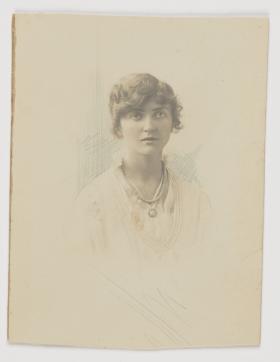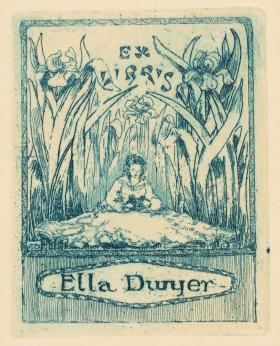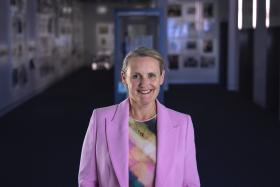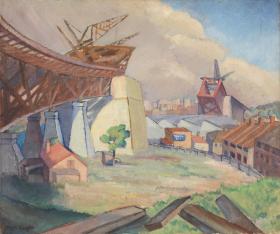For nearly as long as books have been printed, bookplates have accompanied them. In fifteenth-century Europe, books were precious, luxurious items, and these small printed paper labels affixed to the inside front cover or front flyleaf served to indicate who the book’s owner was. Bookplates are also known by the Latin term ex libris, which translates as ‘from the books of’.
As bookplates are custom-made items that identify a particular person’s property, it is not surprising that over the centuries the engravers and artists who have designed bookplates have been notably creative. A bookplate might express an owner’s status and identity by depicting their hobbies, values, profession or achievements through a variety of visual symbols. It might show their home, a favourite landscape or even a beloved pet. Thus they are not only miniature works of art but can be miniature biographies too. While it is possible to appreciate their technical proficiency, if there are no records explaining their subject matter and symbolism it can be hard to truly grasp their meaning.
Hobart-born, Sydney-based artist Ella Dwyer (1887–1979) was renowned as one of Australia’s most talented bookplate designers. Her bookplates were admired for her dreamy compositions and the gossamer lightness of her etchings. Though her work has appeared in publications and exhibitions in Australia and overseas, little has been written about her life and career. A recent project to organise and rehouse the Library’s collection of the Dwyer Family Papers has shed light on her artistic practice and the stories behind her bookplates.
The Dwyer family was evidently a creative one. George Lovell Dwyer, her father, was a music critic and journalist. Her sister Vera, to whom she would remain close throughout her life, was a novelist. To pursue her interest in art, Dwyer trained in etching under artist Sydney Long. Decades later in a letter written to Mitchell Librarian Suzanne Mourot, she would recall, ‘He was a wonderful teacher in that he was so unrestrictive and from the first gave one such confidence in one’s own ability.’ Long, who is best remembered for his Art Nouveau–style paintings of the Australian bush, was also a talented bookplate designer. Perhaps it was he who introduced Dwyer to creating what would become her speciality.
Dwyer worked from a studio equipped with a printing press in her home in Roseville on Sydney’s North Shore. Typically, her etchings were made on copper plates, and many of these became the property of the individual who had requested the bookplate. She would print a limited number of artist proof editions, heating the plate and hand-wiping it for each proof, before relinquishing the plate.
Dwyer often sought to create a harmony between the bookplate and the genre of book it was going to be affixed to. For Frida Linz, for example, who enjoyed reading folklore and fairy tales, Dwyer depicted a dryad surrounded by birds, a scene that symbolised the companionship that books bring to a reader.
Reading through Dwyer’s correspondence, it’s clear that most of her bookplates were more than transactional commissions. She developed deep friendships with many of the people she created bookplates for. In 1950, after visiting New Zealand marine biologist David H Graham, Dwyer designed a plate for him that reflected his passion for Wedgwood. She included a remarque, a small meaningful detail on the margin, which is removed from the plate entirely after a small number of prints have been made. For Graham’s bookplate it was a cup and saucer, in remembrance of a cup of tea they shared.
Dwyer also had a deep friendship with Johannes Carl Andersen, poet and inaugural librarian of the Alexander Turnbull Library. Andersen sent her letters that included photographs of his garden and pressed petals, enclosed in envelopes embellished with cut-out images of flowers. Dwyer created a bookplate for him that captured his love of poetry and flora.
It features a musical line from a sixteenth-century poem written on the pages of an open book that is nestled in a garden bed: ‘I pipe of plants, I sing of summer flowers.’
In appreciation of the imaginative quality of the bookplates she created, Andersen once told Dwyer that her inspiration must come from secluding herself in a bower of irises. Dwyer responded by etching a tiny bower on metal, that showed a figure reading under the shade of towering iris flowers. It was a testament to friendship, creativity and the companionship of books.
Ella Dwyer’s bookplates, printing plates, photographs and family papers are held by the State Library of NSW. A selection of her work is on display in the Library’s Amaze Gallery.
Alice Tonkinson is a Librarian in Acquisition Curation and Collection.
This story appears in Openbook autumn 2024.





